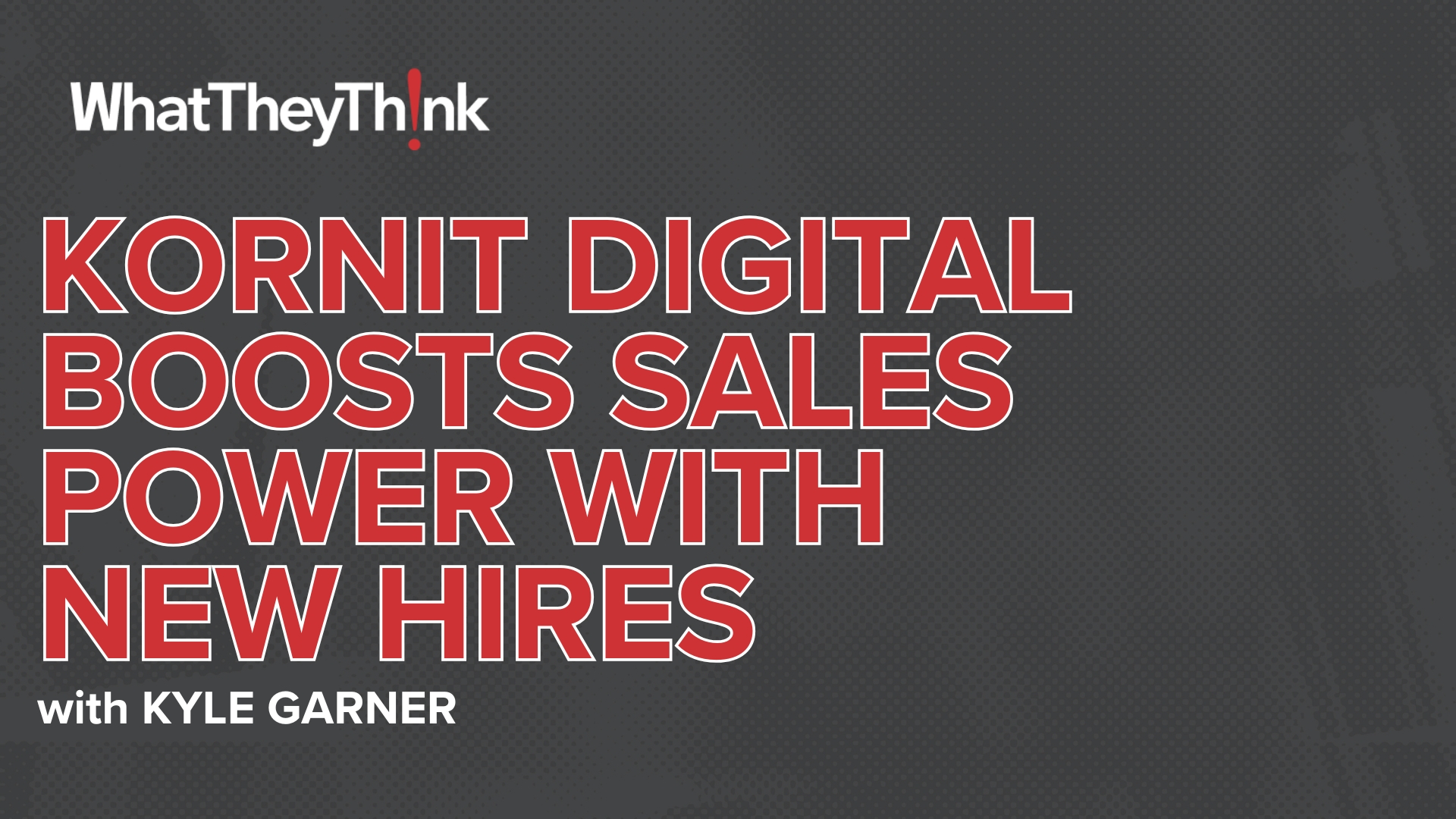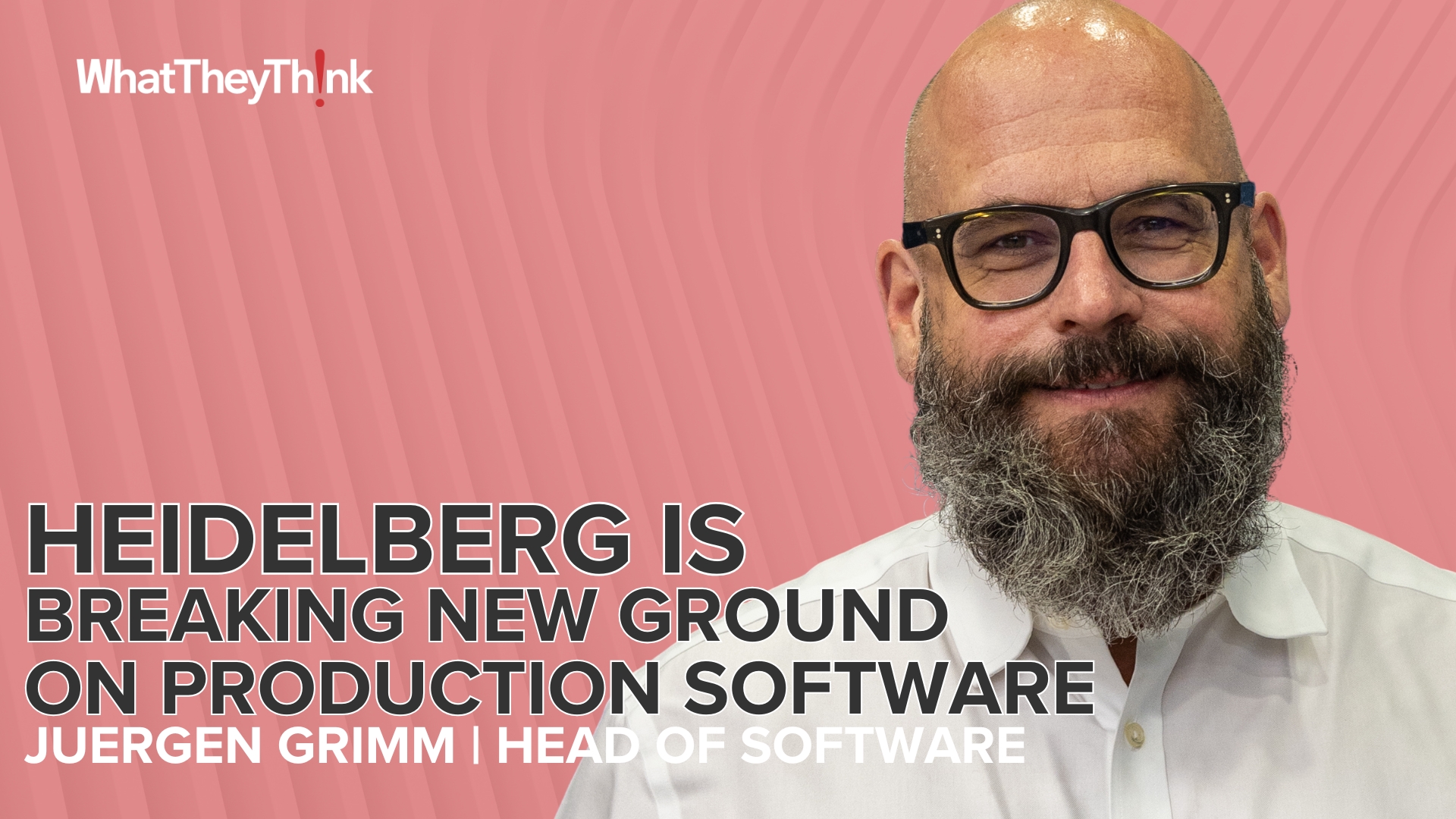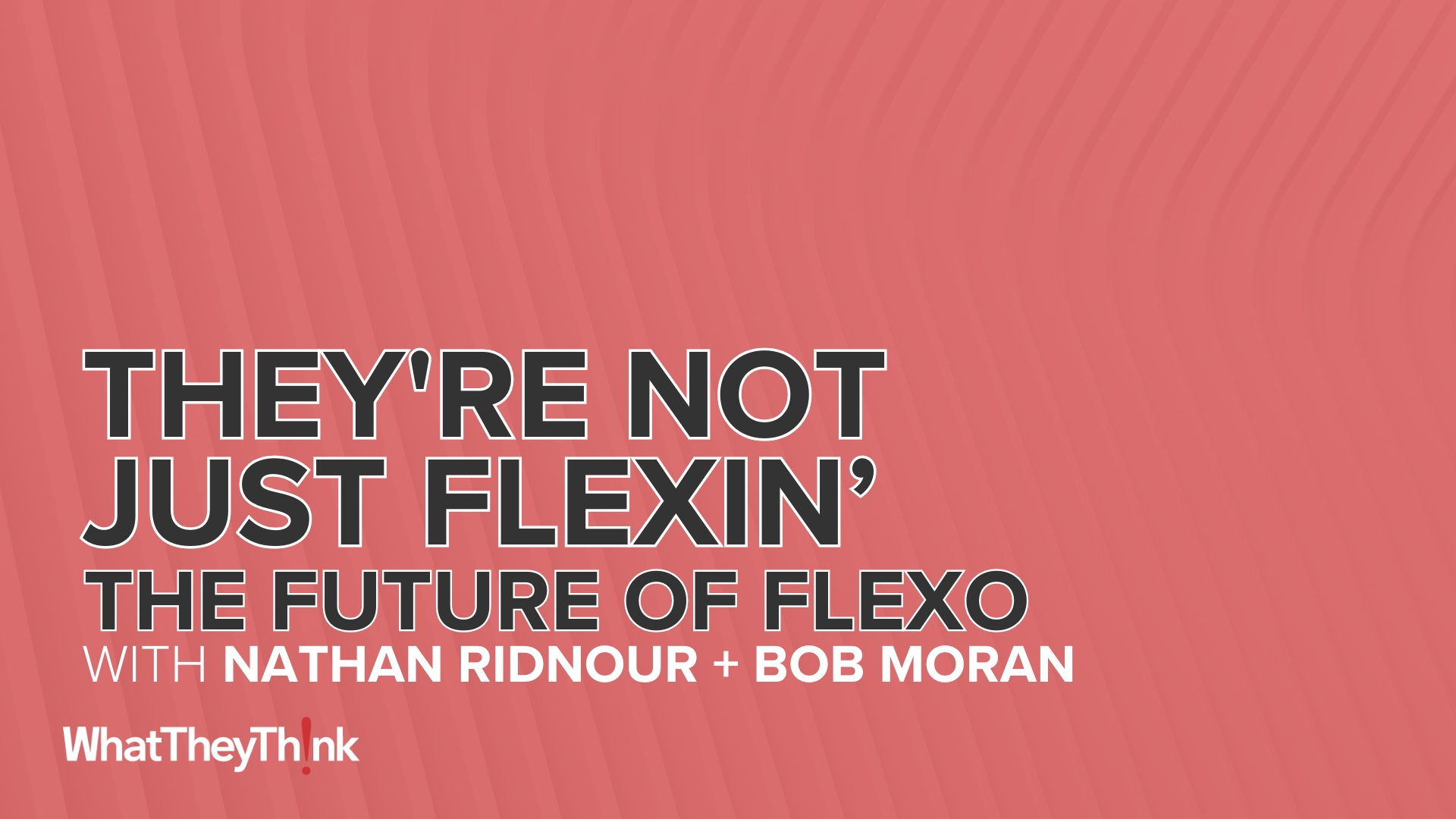Hear that? The teeth-rattling clatter of buckle folders? The whispery whine of guillotine cutter knives slicing straight through whole pallets of paper? The 18-wheeler chorus of big offset presses running flat out? And, hovering somewhere near the top of the decibel scale, a dense racket of human voices that makes it hard to pick the machines out of the general din?
If you're a printer whose ears haven't been assaulted by any of this over the last couple of days, it can mean only one thing: you've been attending Graph Expo 2012 in Chicago.
Nothing highlights the changed nature of this graphic communications trade show more vividly than the new quality of its ambient sound.
Most of the conventional heavy printing equipment is long gone from McCormick Place, having yielded the floor to digital devices that make a lot less noise.
Software solutions for workflow, personalization, data management, color control, and Web-to-print-now major focal points of the expo-make no sounds at all as they're demo'd on monitors that seem almost as numerous in the South Hall of McCormick Place as those on the trading floor at the Chicago Stock Exchange.
As for the dialed-down volume of human voices, that can't be ascribed to a smaller number of human throats. Attendance on the first day (Oct. 7) was thicker than what returning showgoers will remember from Graph Expo 2011, a disappointing event in terms of turnout.
This year, despite (or possibly because of) a two-hour opening delay on day one to accommodate the running of the Chicago Marathon, the crowd surged thickly into the aisles and stayed that way for the rest of the afternoon, raising hopes for a head count that will leave exhibitors smiling when the show closes on Wednesday (Oct. 10).
If the crowd was quieter despite being bigger, part of the explanation is that they no longer had to shout above the roar of heavy equipment. More to the point, though, is the fact that a normal conversational tone is much better suited to the kind of event that Graph Expo has become.
It's now as much a conference or a symposium as it is a technology exposition. With 45 "co-located" sub-events-user group meetings, association conclaves, fundraisers, and award galas-clustered around the main program, the talk at Graph Expo has no less drawing power than the tech. That's why there's something new in the soundscape of the show-a deliberative, analytical overtone that the tire-kicking, order-writing hullabaloo of previous editions never permitted to be fully heard.
It means, perhaps, that Graph Expo never needed to carry on at the top of its lungs to be effective as a venue for showcasing graphic equipment-the solutions, when intelligently presented, always speak persuasively for themselves. This year, presentations by two vendors from opposite ends of the production spectrum capture the changed essence of Graph Expo and the conversations it inspires about emergent trends in graphic communication technologies.
Other, equally apt examples could have been chosen, but the things that HP (booth 1227) and Heidelberg (booth 1214) brought to the show merit attention because of the traditionally large footprint of these companies as Graph Expo exhibitors. Both also are changing direction in ways that illuminate the bigger picture of technological progress in printing: HP as a vendor of digital solutions, initially for short runs, that it now wants to aim at high-volume work; and Heidelberg as a classic big-iron offset manufacturer with its eyes equally fixed on winning acceptance for offset in applications where run-length economics would seem to be against it.
HP's centerpiece announcement was that its B2-format Indigo 10000 digital color press has entered beta testing in three international sites, including Sandy Alexander in the U.S. Six more beta test sites for the Indigo 10000 are to be up and running by the end of the year, according to the company, which is positioning the machine as a solution for the kinds of multiple-up, longer-run work that the B2 (20" x 29") format typically is used for in conventional printing equipment.
Michael Graff, president of Sandy Alexander, described his Clifton, NJ, company as an environment where volumes are sufficient to keep not just one Indigo 10000 busy, but a second one as well: the copy he intends to install for beta operation, side by side with the first, early next year.
Another HP customer, BMK of Sao Paulo, Brazil, is making similar heavy-duty use of Indigo equipment: in this case, a recently installed Indigo w7200 web press. With this machine, the company has produced transpromotional documents an other high-volume work for some of the country's leading banks and insurance companies. BMK also is using a T350 inkjet web press from HP to print copies of the Financial Times for readers in Sao Paulo and other Brazilian cities.
Having manufactured more offset presses of all kinds than anyone else for more than 125 years, Heidelberg has seen all that there is to see in high-volume print production. Its presses are still used for that purpose, but the company also has adapted its offset technologies for applications at the opposite end of the run length range.
At Graph Expo, the sole press in the Heidelberg stand is a 14.57" x 20.14" Speedmaster SM 52 with a feature called Anicolor-an inking system said to eliminate ghosting and related problems as the press comes up to color within a strikingly small number of waste sheets. These capabilities, says Heidelberg, make an Anicolor-equipped Speedmaster economically competitive with a digital press for short runs because the progress toward sellable sheets is so rapid.
Taylor Corporation clearly agrees, having bought and installed six Anicolor Speedmaster SM 52s since 2007. "We see Anicolor as a complement to digital," declared Craig Krone, a senior R&D analyst for Taylor. The presses, he said, can achieve sellable color in five sheets. Their operators are expected to run no more than 20 waste sheets before getting Anicolor jobs into full production.
These two vendor stories have hundreds of counterparts on the exhibit floor at Graph Expo. We'll listen for more and repeat them-at the appropriate volume, and in the proper tone-in further reports from the show.
Commentary & Analysis
Silence, or Something Pleasantly Close to It, Is Golden at Graph Expo
If you listen closely, you can hear the new, quieter sound of Graph Expo. It's easier on the ears, and it makes for a much improved trade show experience.
About Patrick Henry
Patrick Henry is a journalist and an educator who has covered the graphic communications industry since 1984. The author of many hundreds of articles on business trends and technological developments in graphic communications, he has been published in most of the leading trade media in the field. He also has taught graphic communications as an adjunct lecturer for New York University and New York City College of Technology. The holder of numerous awards for industry service and education, Henry is currently the managing director of Liberty or Death Communications, a content consultancy.
- Questions to ask about inkjet for corrugated packaging
- Can Chinese OEMs challenge Western manufacturers?
- The #1 Question When Selling Inkjet
- Integrator perspective on Konica Minolta printheads
- Surfing the Waves of Inkjet
- Kyocera Nixka talks inkjet integration trends
- B2B Customer Tours
- Keeping Inkjet Tickled Pink
© 2024 WhatTheyThink. All Rights Reserved.















Discussion
By Paul Gardner on Oct 10, 2012
Thanks for the wonderful perspective Patrick!
"It's now as much a conference or a symposium as it is a technology exposition."
Your observation on the changing (changed?) nature of Graph Expo, mirrors the experience I've had in attending HP's annual Dscoop event. What was purely a conference in the the early years, has evolved to include a mini-expo of equipment and technology.
Perhaps there's a natural blend of the two - an equilibrium - that both Graph and Dscoop are discovering.
Sure technology is important. But investing heavily in gear, without a direct connection to high value solutions for existing customers, has been fatal to many a business.
"…solutions, when intelligently presented, always speak persuasively for themselves."
And perhaps there's also a lesson here regarding how we printers talk to our customers... a suggestion to quitely help them connect the strategy dots, rather than simply shouting about our technology.